
(KPL) Laos plans to promote its reputation as “Laos - Jewel of the Mekong,” in the future to attract more tourists around the world.
This was quoted from a statement of Minister to the Prime Minister’s Office Mr Somphong Mongkhounvilay made at a seminar on Lao Mass Media with Tourism on 21 March at the National Culture Hall.
The seminar was organised by the Lao National Tourism Administration (LNTA) in cooperation with mass media agencies to mark the 10th founding anniversary of the “Mouang Lao” (Laos) Magazine.
Mr Somphong who is also the LNTA President, highlighted over the past 15 years the active and constant Lao tourism development. Since 1999, the Lao tourism has seen a fast and constant growth, the number of foreign tourist arrivals has also on the rise, at least 20% a year on average. It has made a large income for the nation and ranks top of national income spinners.
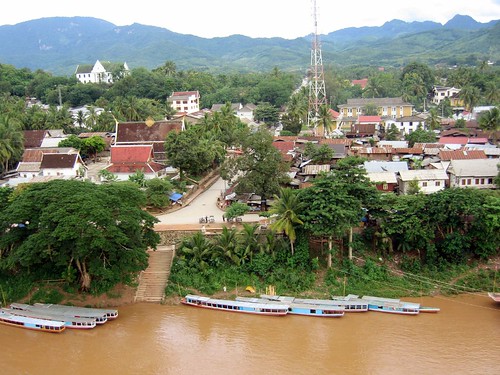
In particular 2007, more than 1.6 million tourists visited Laos, up by 33%, the highest rate among ASEAN member countries. Tourism also generated US$235 million for the country.
The reputation of Lao tourism was emerging in the region and the world. In particular the Nam Ha ecotourism in northern Luang Namtha province, has won three international awards. 10 hotels have also received “green hotel awards” from the Association of ASEAN Tourism.
The curriculum of guide training of the world heritage town of Luang Prabang has won a gold award from the Association of Asia-Pacific Tourism. So has the website “ecotourismlao.com”.
The Luang Prabang World Heritage Town has also been voted by tourists through the Wanderlust, a leading travel magazine of the United Kingdom as the first rank of popular tourism town for three consecutive years (2005-07). The world leading newspaper “New York Times” in the United States selected Laos as the first rank of tourism destination by 2008, out of the 53 well-known tourism sites around the world.
Mr. Somphong also viewed that Laos’ achievement and prestige in international tourism was attributed to a great contribution of local mass media.
The successful lessons from among ASEAN member countries such as Malaysia, Thailand, Singapore and others countries worldwide have invested in multi-advertisements with a huge amount each year.
According to the LNTA statistics for the 2003-07 period, tourists received information on Laos mainly from magazines and newspapers, accounting for 51 % per year, 4 % through TV, about 28-30 % through radio, 12 % through friends and 41 % through tour companies. The mass media is considered very significant for the renovation movement and tourism promotion and marketing. So the role of the media has been identified in the Lao Tourism Development Strategy for the 2006-20 period as well as tourism law, aiming at providing understanding to Lao people on contribution of tourism preservation and promotion and making foreign tourists knowing about Laos.
The awareness campaign is to concentrate on publishing the beauty of nation, outstanding natural resources, national identity of tourism products in culture, history, nature and other hospitality services. These works have so far been paid attention by the LNTA in cooperation with other private tourism companies.
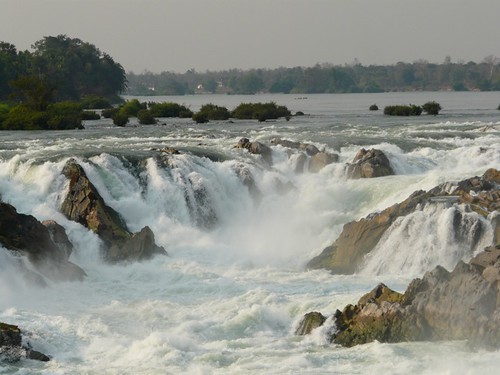
The LNTA President added that Laos was a small country which was integrating its economy to the regional and international economies, which there will be cooperation and high competitive in tourism area following the opening of ASEAN Free Trade Area.
Laos will host the 2009 SEA Games in 2009 and Vientiane will celebrate its 450th anniversary of the proclamation as the country’s capital. The Party and Government consider the tourism as a priority out of other priorities involved to national economic development.
“By this, we need to cooperate with the mass media to fulfil the goal set by the Government,” said the LNTA President.
The LNTA expects that income from tourism would increase to 13% by the 2008-09 period.
Laos - Jewel of the Mekong

The renovation of the 36km-long road leading to Konglor Cave in Hinboun district, Khammuan province, will allow the passage of all vehicles to the cave from May, said a senior official yesterday.
At present the road is still under construction, and larger vehicles have been unable to navigate the detour road for the past two months.
Visitors to the cave are recommended to take a small vehicle if they want to experience this amazing cave.
The Director of the road-building project, Mr Somchay Khanthasane, told Vientiane Times yesterday that workers are asphalting the road so it is closed to traffic. Road users must temporarily use a detour road instead.
Mr Somchay said that although the road will open in May, it might be necessary to close it in the rainy season this year if the construction of two new bridges is not complete.

“We are now putting down the first layer of asphalt. We will continue the work after the rainy season and the road will be in perfect condition by the end of this year,” he said.
At the moment it takes three hours to get to the cave after leaving main road No A8, as the path passes through rice fields and is very bumpy. In the wet season it's almost impossible to get there.
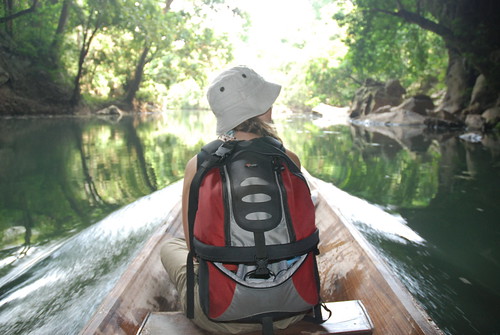
Once the renovated road is finished, it should take just under one hour, said Mr Somchay.
The new road is costing about US$4.5 million to build. The Asian Development Bank has lent the Lao government more than 80 percent of the required funds, according to the Head of the Khammuan provincial Tourism Administration, Mr Thayaphone Singthong .
He said the road upgrade is part of tourism development in the province.
“Tourism development is very important for people living near the cave and will help to contribute to poverty reduction,” he said.
The 7.5km-long cavern that has been earmarked as a tourist attraction was discovered in the 16th century under the leadership of the governor of Nalae district, now Nakai district.
In 1997, the government invited French experts to survey the area before declaring it an official tourist site in 2002.
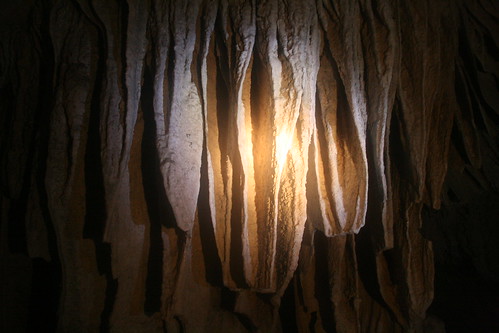
Mr Thayaphone recalled that in 2002 only eight foreign visitors came to the cave, but this number had increased rapidly since then.
The cave is 30 metres wide and between 20 and 100 metres high and is located in the National Protected Forest Area of Hinboun Mountain.
More than 100 foreign visitors make the journey to the cave each month on average, he said.
Mr Thayaphone said that in the past the cave was not seen as a source of income for local people, but had now become an important money-earner for many in the area.
“Unspoiled natural destinations have the potential to attract more tourists to the province,” he said.
Community-based ecotourism services, including village home-stays and boat trips through the cave, are provided by local people who proudly keep local customs alive.
By Souksakhone Vaenkeo
Vientianetimes
Road to Konglor cave in Laos opens to public in May
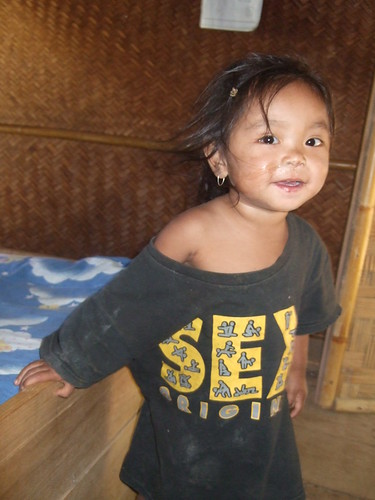
The Lao National Tourism Administration (LNTA) has pledged to protect children from sexual abuse by travellers and tourists.
Representatives from many branches of the tourist sector gathered to learn about effective methods to recognise and report suspicious behaviour at the Child Wise Tourism Training workshop held yesterday in Vientiane .
Speaking at the workshop, LNTA Vice Chairman Soukaseum Bodhisane said it was mainly those working in the tourism sector who were most likely to observe this abhorrent behaviour on the part of some tourists.

“The number of tourists flocking into Asia each year has grown into millions,” Mr Soukaseum said.
“While most travellers are responsible and respectful, there is a small minority who travel solely to exploit children in places where they think they can get away with it,” he said. “This is a crisis for the tourism industry.”
The commercial sexual exploitation of children is a global problem, causing unimaginable harm to millions of children every year. Child sex offenders visit destinations where they think they can sexually abuse children without being identified, according to a press release from Child Wise Australia.
The half-day workshop was organised by the LNTA with the support of Child Wise and the Australian government. More than 50 participants attended, including hotel staff, taxi drivers, tour guides and operators, and tourist police.
The workshop helped to highlight the ongoing commitment of Laos to ensuring that the rights of its children are protected from all forms of abuse, the press release said.
Laos is actively committed to ending child sex tourism, which is a serious crime punishable by law. Local and international law enforcement agencies have teamed together to ensure stronger policing and prevention.
The education of the tourism sector is a powerful means to protect children. Staff have direct contact with tourists on a daily basis, and they are well placed to detect and report situations where children may be at risk.
Responsible tourism is everyone's responsibility. Local citizens and responsible tourists can be active in child protection. If you observe a situation where you believe a child may be at risk, please call the hotline number anytime on 021-251128.
The campaign against child sex tourism in Laos started in 2005 to protect children from sexual abuse by travellers both foreign and local, with the assistance of Child Wise and the Australian government.
By vientiane times
Photo: flickr
Laos vows to prevent child sex tourism
 A product of the British-Chinese Opium Wars, Hong Kong is a culturally-charged metropolis with a fantastic skyline cast against a backdrop of green hills. This sleepless city is a tourist magnet, and visitors are pleased to find as many historic attractions as there are modern amenities.
A product of the British-Chinese Opium Wars, Hong Kong is a culturally-charged metropolis with a fantastic skyline cast against a backdrop of green hills. This sleepless city is a tourist magnet, and visitors are pleased to find as many historic attractions as there are modern amenities.What’s Cool
World-class skyscrapers, Chek Lap Kok International Airport, panoramas from Victoria Peak, Hong Kong Disneyland, houses built on stilts, bi-level trams, efficient public transport, ancient temples and state-of-the-art museums.What’s Not
The occasional typhoon, endless choices, cramped hotel rooms, foul-smelling alleyways, muggy weather, greedy taxi drivers, traffic, rats and expensive medical bills.When to Go
Best: October-DecemberWorst: June-September
Visas
US/Can: no (30 day)EU: *no (30 days)
Aus/NZ: no (30 days)
Essential Info
Time: GMT+7Electricity: 220V 50Hz 3-Pin Plug
Money: Baht: 1US$ = 32 Baht
Phone: ICC (+66) Outgoing: 001
Affluence is around every corner on the shiny northern coastline of Hong Kong Island, yet the territory isn't all skyscrapers and neon lights. The densely populated Kowloon offers a more down-to-earth experience while the New Territories and outlying islands offer great adventures if you can drag yourself away from the excellent shopping, world-class dining and luxury hotels.
The best views are on offer at Victoria Peak, and those who are too puffed to get up here after swiping their plastic can ride the Peak Tram. Lantau Island is host to an enormous Buddha statue and monastery which make for a fantastic daytrip but most visitors prefer to make a beeline for Hong Kong Disneyland or one of the surprisingly beautiful beaches like Repulse Bay.Travel to Hong Kong - Getting There
Hong Kong’s Chek Lap Kok International Airport is one of Asia’s most impressive, and flights connect here from all over the world. Ferries regularly arrive from neighboring islands, and it is also possible to arrive by train from major cities on the mainland. Public transportation here is top-notch, with commuter trains and city buses traveling anywhere you want to go. The metro (MRT) runs from the New Territories to Kowloon and offers the quickest connections. Taxis are seldom needed.Hong Kong Things to Do
- Hong Kong Island
- Is the metropolitan district characterized by skyscrapers, tireless business sectors and Victoria Peak.
- New Territories
- Is where the commuters live, and it’s also outfitted with some forested hiking trails that make for a nice escape from life in the city.
- Repulse Bay
- Don’t let the name deter you; the local elite live along this idyllic, sandy beach.
- Kowloon
- Myriad shopping options packed into winding alleyways and quintessential Chinese markets.
- Lantau Island
- Po Lin Monastery, home of a giant Buddha statue, is found here in close proximity to the airport.
Hong Kong Travel Guide

The World Heritage town of Luang Prabang last Sunday celebrated its award by the UK 's leading travel magazine, Wanderlust, of the ‘Top City Gold Award', for the third successive year.
The celebrations began with food offerings to monks, followed by processions carrying national flags and banners, and an elephant parade.

The parade began at the provincial administration office and slowly travelled along Sisavangvong Road to Vat Xieng Thong, with local and foreign visitors joining in the celebrations.
Speaking before the parade, Governor of Luang Prabang province Bounheuang Douangphachan said the people of Luang Prabang were very proud to receive the international accolade.
“The award is not easy to win and we were competing with many well-known cities around the world,” he said.

Luang Prabang authorities have treated tourism as a priority in achieving socio-economic development and the industry has grown rapidly. The province has developed tourism services for cultural, natural and historical attractions to bring economic benefits to local people, he said.
The town was voted into the magazine's top 10 cities, from a list of 615, before the decision was made to give it the gold award. A poll of the magazine's readers who had visited the city found a satisfaction rating of more than 97 percent.
Luang Prabang won the award because it is an outstanding example of the fusion of traditional architecture and Lao urban structures with those built by Europeans in the 19th and 20th centuries. The 1,200-year-old historic town is considered to be the cultural and religious capital of Laos .
“The most important aspect of the town is the charm and hospitality of its people, a characteristic that has been handed down over the centuries. Now it has been revealed to the world,” Mr Bounheuang said.
He said people of all ethnicities should be proud of their artistic culture and architecture, and urged them to preserve and develop the town in a sustainable way.

In 1995 UNESCO added the town to its list of World Heritage Sites. It became the first such site in Laos , ensuring the preservation of its mixture of traditional Lao and French architecture. Since then its unique character has helped make it one of the most popular tourist destinations in the country.
Also attending the celebrations were Minister to the Prime Minister's Office and President of the Lao National Tourism Administration Somphong Mongkhonvilay, Deputy Governor Dr Khampheng Saysompheng, and the Deputy Minister of Information and Culture Bouangeun Saphouvong.
By MK. Vongsam-ang
Vientianetimes
Luang Prabang celebrates top travel award 2008
Japanese ambassador discusses assistance for Lao tourism

President of the Lao National Tourism Administration Somphong Mongkhonvilay met the Ambassador of Japan to Laos , Mr Masaaki Miyashita, last week in Vientiane to discuss assistance for the Lao tourism sector, according to a press release from the administration.
Mr Miyashita told Mr Somphong that many Japanese businesspeople were interested in investment in Lao tourism, it stated.
He said he was encouraging them to invest in Laos to serve Japanese visitors to Laos in the future. He observed that cooperation between Laos and Japan had enhanced. Japanese investment in Laos has rapidly increased and the country is now is the fifth largest foreign investor in Laos , according to the press release.
Mr Somphong, who is also Minister to the Prime Minister's Office, informed Mr Miyashita about tourism development and the promotion of ecotourism and historical and cultural attractions. Community-based ecotourism was attracting considerable interest among tourists to Laos .
Japanese visitors to Laos increased by 30 percent last year due to the visa exemption for Japanese citizens that was introduced early last year, according to administration statistics.
The government of Japan has assisted Laos in tourism promotion projects in the area of Road No 9 in Savannakhet province through the Japan International Cooperation Agency. This was the first grant aid project from Japan to Laos , according to the press release.
SOurce: vientianetimes

President of the Lao National Tourism Administration Somphong Mongkhonvilay met the Ambassador of Japan to Laos , Mr Masaaki Miyashita, last week in Vientiane to discuss assistance for the Lao tourism sector, according to a press release from the administration.
Mr Miyashita told Mr Somphong that many Japanese businesspeople were interested in investment in Lao tourism, it stated.
He said he was encouraging them to invest in Laos to serve Japanese visitors to Laos in the future. He observed that cooperation between Laos and Japan had enhanced. Japanese investment in Laos has rapidly increased and the country is now is the fifth largest foreign investor in Laos , according to the press release.
Mr Somphong, who is also Minister to the Prime Minister's Office, informed Mr Miyashita about tourism development and the promotion of ecotourism and historical and cultural attractions. Community-based ecotourism was attracting considerable interest among tourists to Laos .
Japanese visitors to Laos increased by 30 percent last year due to the visa exemption for Japanese citizens that was introduced early last year, according to administration statistics.
The government of Japan has assisted Laos in tourism promotion projects in the area of Road No 9 in Savannakhet province through the Japan International Cooperation Agency. This was the first grant aid project from Japan to Laos , according to the press release.
SOurce: vientianetimes
Japanese to promote Lao tourism
Stay longer, book urges visitors

The International Finance Corporation's Mekong Private Sector Development Facility (IFC-MPDF) launched the second edition of the travel guide-book ‘ Stay Another Day Laos ' last week in Vientiane .
The 80-page booklet features tourism products and services from 40 non-governmental organisations and socially-conscious businesses that support tourist attractions in a variety of ways, usually through the preservation of culture and environmental assets and in assisting local communities.
Speaking at the launch, the IFC-MDPF's Head of Office Charles Schneider said “The booklet is bigger and better than last year's edition. We printed 35,000 copies for this year.”
“We're trying to measure the impact of this booklet to see if it is helping tourism in Laos . “I'm sure that you see tourists walking around towns with the book in their hands.”
The booklet aims to encourage tourists to stay in the country longer and spend money in more sustainable ways.
The number of partners supporting the book increased by 5 percent from last year, said Mr Schneider.
The book provides information on ecotourism, restaurants and cooking classes, traditional massage, development projects, rehabilitation centres, artisans, performances by master musicians, sports, and many other activities.
“We try to measure how others are benefiting from this book. We found that visitors to our partners increased by between 30 to 50 percent since the book was first published last year,” Mr Schneider said.
The book helps achieve the main objectives of sustainable tourism, promoting business, reducing poverty and increasing community livelihoods, he said
It can help stimulate the development of all kinds of enterprises such as organic growers, craft producers and sellers, and performers, which begin by supplying the tourist industry but grow to serve other markets, he said.
It helps the tourism sector contribute more widely to the country's economic development, Mr Schneider said.
Copies of the booklet will be distributed through hotels, restaurants, travel agencies and tour operators and libraries.
Source: vientianetimes
http://www.stay-another-day.org

The International Finance Corporation's Mekong Private Sector Development Facility (IFC-MPDF) launched the second edition of the travel guide-book ‘ Stay Another Day Laos ' last week in Vientiane .
The 80-page booklet features tourism products and services from 40 non-governmental organisations and socially-conscious businesses that support tourist attractions in a variety of ways, usually through the preservation of culture and environmental assets and in assisting local communities.
Speaking at the launch, the IFC-MDPF's Head of Office Charles Schneider said “The booklet is bigger and better than last year's edition. We printed 35,000 copies for this year.”
“We're trying to measure the impact of this booklet to see if it is helping tourism in Laos . “I'm sure that you see tourists walking around towns with the book in their hands.”
The booklet aims to encourage tourists to stay in the country longer and spend money in more sustainable ways.
The number of partners supporting the book increased by 5 percent from last year, said Mr Schneider.
The book provides information on ecotourism, restaurants and cooking classes, traditional massage, development projects, rehabilitation centres, artisans, performances by master musicians, sports, and many other activities.
“We try to measure how others are benefiting from this book. We found that visitors to our partners increased by between 30 to 50 percent since the book was first published last year,” Mr Schneider said.
The book helps achieve the main objectives of sustainable tourism, promoting business, reducing poverty and increasing community livelihoods, he said
It can help stimulate the development of all kinds of enterprises such as organic growers, craft producers and sellers, and performers, which begin by supplying the tourist industry but grow to serve other markets, he said.
It helps the tourism sector contribute more widely to the country's economic development, Mr Schneider said.
Copies of the booklet will be distributed through hotels, restaurants, travel agencies and tour operators and libraries.
Source: vientianetimes
http://www.stay-another-day.org
New bbook urges visitors to stay longer in Laos
Closer links urged to foster tourism

Photo: Temple in Savannakhet province, Laos
The Lao National Tourism Administration (LNTA) has urged tourist offices around the country to work together to promote popular tourist attractions.
“If all offices cooperate we hope to persuade tourists to stay longer in Laos ,” LNTA President Somphong Mongkhonvilay said on Tuesday in Vientiane province.
He said the administration planned to set up regions, each consisting of four or five provinces, and tourist operators in those regions would be asked to cooperate in promoting the various attractions in the area.

Recently, tourism offices from the five central provinces held a festival in Savannakhet province to promote tourist sites, local culture and handmade products, attracting thousands of visitors.
“This was a great event and served to showcase tourist attractions in the area. Another successful event was the Elephant Festival held in Xayaboury province earlier this month, which drew interest from the local and foreign media and advertised our tourism potential to the world,” said Mr Somphong.
He added that tourism in Laos has been developing in the last few years because the government has made it easier for visitors to get visas, as well as increasing access to neighbouring countries.

The LNTA will organis e a festival in Vangvieng district, Vientiane province, at the end of this year to promote tourism links between five southern and four northern provinces , as well as parts of Vietnam and Thailand .
“The festival will be held in Vangvieng district because it is well known among tourists worldwide,” Mr Somphong said.
He advised that provincial tourism offices should select their best tourist attractions to promote at the festival.
By Souknilundon Southivongnorath

Photo: Temple in Savannakhet province, Laos
The Lao National Tourism Administration (LNTA) has urged tourist offices around the country to work together to promote popular tourist attractions.
“If all offices cooperate we hope to persuade tourists to stay longer in Laos ,” LNTA President Somphong Mongkhonvilay said on Tuesday in Vientiane province.
He said the administration planned to set up regions, each consisting of four or five provinces, and tourist operators in those regions would be asked to cooperate in promoting the various attractions in the area.

Recently, tourism offices from the five central provinces held a festival in Savannakhet province to promote tourist sites, local culture and handmade products, attracting thousands of visitors.
“This was a great event and served to showcase tourist attractions in the area. Another successful event was the Elephant Festival held in Xayaboury province earlier this month, which drew interest from the local and foreign media and advertised our tourism potential to the world,” said Mr Somphong.
He added that tourism in Laos has been developing in the last few years because the government has made it easier for visitors to get visas, as well as increasing access to neighbouring countries.

The LNTA will organis e a festival in Vangvieng district, Vientiane province, at the end of this year to promote tourism links between five southern and four northern provinces , as well as parts of Vietnam and Thailand .
“The festival will be held in Vangvieng district because it is well known among tourists worldwide,” Mr Somphong said.
He advised that provincial tourism offices should select their best tourist attractions to promote at the festival.
By Souknilundon Southivongnorath
Let's work together to promote Lao tourism
Đăng ký:
Nhận xét
(
Atom
)


.jpg)

